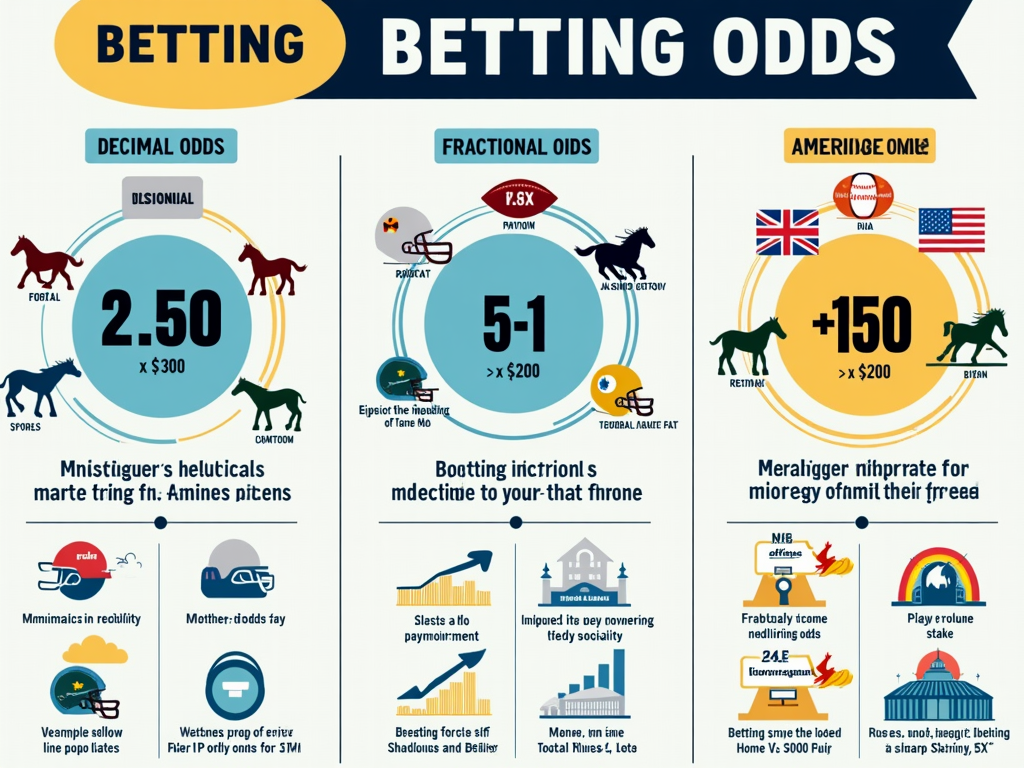Understanding Betting Odds: A Foundation for Strategic Wagering
Betting odds form the foundation of strategic wagering by displaying outcome probabilities and potential payouts. Bookmakers adjust these numbers based on event statistics while adding their commission, known as vigorish or vig, which typically ranges from 2–10% of total bets placed.
Key Takeaways
- Decimal odds (European) show total payout per unit bet and are considered the most straightforward format for calculations
- Fractional odds (UK/Ireland) display profit ratio, while American odds use +/- to show profit on a $100 bet
- Odds conversions between formats help bettors identify value across different betting platforms
- Market forces like injuries, weather, and betting volume cause odds to shift dynamically
- Understanding implied probability helps identify value bets by comparing true likelihood against posted odds
Comparing Odds Formats
Decimal Odds
Decimal odds offer the clearest path for quick calculations because they show the total return including the stake. For instance, a $10 bet at 2.50 odds returns $25 total—simple math that aids in rapid decision-making.
Fractional Odds
This format, common in the UK and Ireland, expresses the potential profit as a ratio. For example, 5/1 odds mean a $10 bet profits $50 and also returns the original $10 stake. This requires one additional calculation step for total returns.
American Odds
Used widely in the U.S., American odds use positive and negative numbers centered on $100 bets. A +150 line means a $100 bet wins $150 profit, while a -150 line means a bettor must wager $150 to win $100 profit. This format quickly highlights favorites and underdogs.
Converting Between Formats
Learning to convert between decimal, fractional, and American odds is crucial. It allows bettors to find value across various sportsbooks, which may default to specific formats. Many online calculators streamline this conversion process.
The Value of Implied Probability
The true power of understanding odds lies in grasping implied probability—the likelihood of outcomes as reflected by the posted odds. When your analysis indicates a different probability than what the odds suggest, you’ve found a value betting opportunity.
Mastering these formats and concepts brings you a step closer to making informed, strategic betting choices.
Why Different Betting Odds Formats Exist and What They Mean
Betting odds aren’t just random numbers – they reflect careful calculations by bookmakers to show both the likelihood of outcomes and potential payouts. As a seasoned bettor, I’ve learned that understanding betting odds formats is essential for making smart wagering decisions.
Breaking Down Odds Formats
Different regions have shaped unique ways of displaying odds based on local betting customs and preferences. The main formats you’ll encounter are:
- Decimal odds (European) – Shows total payout per unit bet (2.00 means $2 return on $1 bet)
- Fractional odds (UK/Ireland) – Displays profit ratio (2/1 means $2 profit on $1 bet)
- American odds (Moneyline) – Uses +/- to show profit on $100 bet or stake needed for $100 profit
Each format tells the same story but speaks a different language. Decimal odds have gained popularity for their simplicity – they directly show your total return including your stake.
Bookmakers factor in their profit margin, called vigorish or “vig,” which typically ranges from 2-10% of the betting handle. This margin helps ensure the house maintains an edge regardless of the outcome.
Here’s what the odds tell you beyond potential profits:
- The implied probability of each outcome
- The bookmaker’s assessment of event likelihood
- The total payout you can expect from a winning bet
- How much you need to risk for your target return
I find decimal odds most straightforward for quick calculations. If I bet $100 at odds of 2.50, I multiply my stake by the odds (100 x 2.50 = $250 total return). With American odds of +150, I’d need to do more math to determine my $150 profit on a $100 bet.
Understanding these formats helps you spot value across different betting sites and markets. When you can quickly interpret odds across formats, you can focus on what matters most – finding profitable betting opportunities.
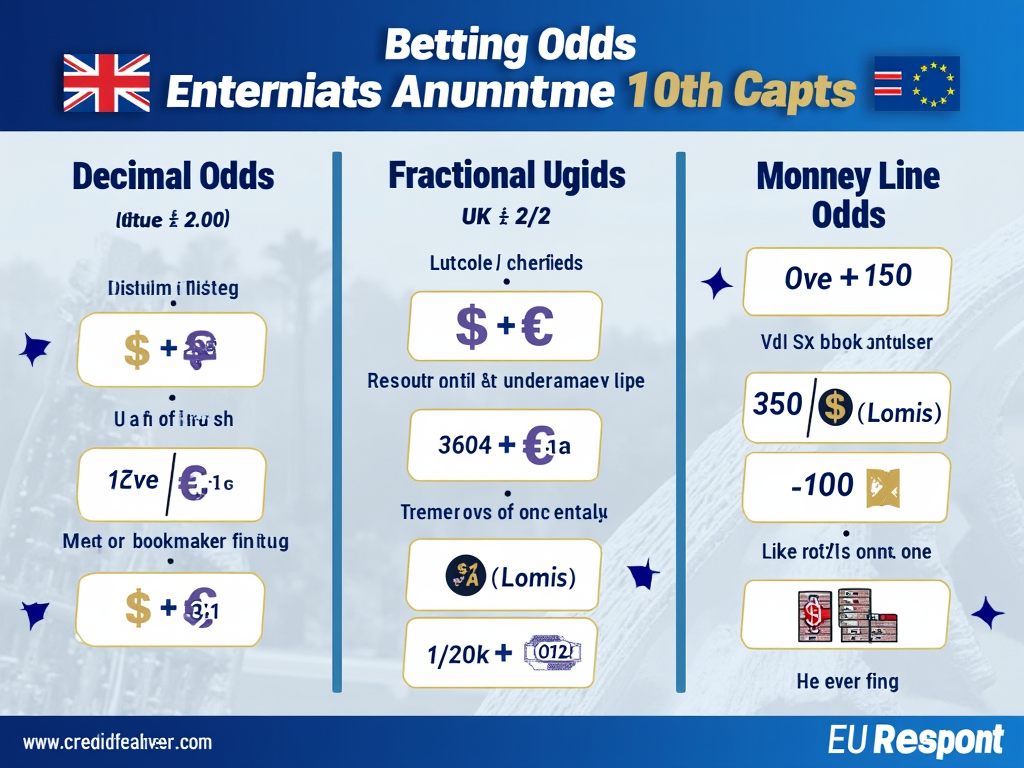
Reading and Calculating Decimal Odds: The Simplest Format
Decimal odds stand out as the most straightforward betting format, making them my go-to choice for explaining odds to newcomers in sports betting calculations and strategy. These odds shine through their simplicity, showing exactly what you’ll get back for every dollar wagered.
Understanding Decimal Odds Values
I’ve found that decimal odds always appear as numbers greater than 1.00, with the total potential return clearly displayed. The smaller the number, the more likely that outcome is expected to happen. For instance, a heavy favorite might show odds of 1.20, while a significant underdog could display at 7.50.
Here’s what the numbers tell you about potential returns:
- A $10 bet at odds of 2.50 will return $25 total (including your stake)
- Odds of 1.50 mean a $10 bet returns $15 total
- When odds show 4.00, your $10 wager would return $40 total
The math stays simple – just multiply your stake by the decimal odds to see your total return. I can quickly calculate that a $50 bet at odds of 1.75 will return $87.50 total ($50 × 1.75 = $87.50).
This format dominates betting markets across Europe, Australia, and Canada because it eliminates confusion. There’s no need for complex formulas or converting between different formats – the number shown is exactly what you’ll get back per unit staked.
For tracking profits, I just subtract my original stake from the total return. So with those 2.50 odds on a $10 bet, I know my profit would be $15 ($25 total return minus my $10 stake).
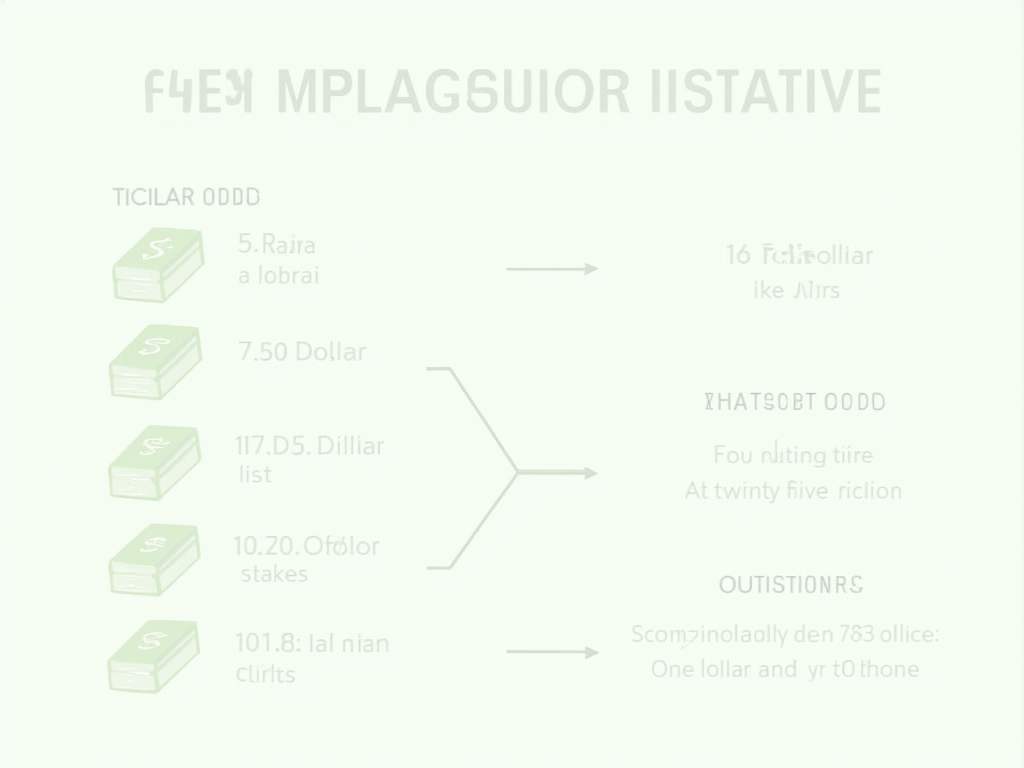
Traditional Fractional Odds: A Guide to UK-Style Betting
Traditional fractional odds remain a cornerstone of betting in the UK and Ireland, particularly in horse racing. These odds are straightforward once you understand their basic structure — they tell you both your potential profit and the stake needed.
Understanding the Format
The numbers in fractional odds show you exactly what’s at stake. The left number indicates your potential profit, while the right number represents your required stake. For example, odds of 5/1 (read as “five-to-one”) mean that for every £1 you bet, you’ll win £5 in profit if successful.
Here’s a quick breakdown of common fractional odds and what they mean:
- Odds-against (like 5/1, 7/1, 10/1): These odds mean your profit will exceed your stake
- Evens (1/1): Your profit equals your stake — bet £10 to win £10
- Odds-on (1/2, 1/4): You’ll need to stake more than your potential profit
- Each-way bets: Usually shown as fractions of the main odds (typically 1/4 or 1/5)
For practical application, consider a £10 bet at 5/1 odds. If your selection wins, you’ll receive £60 back — that’s your £10 stake plus £50 profit. It’s advisable to start with smaller stakes while getting comfortable with these calculations.
Fractional odds give you a clear picture of risk versus reward. When you see odds of 1/2 (odds-on), it signals a favorite — you’d need to stake £2 to profit £1. Conversely, odds of 5/1 suggest an underdog with higher potential returns but lower winning probability. For more insights on betting strategies and odds formats, check out my complete guide to sports betting fundamentals.
Remember, shorter odds (like 1/2) typically indicate a higher probability of winning but offer smaller returns, while longer odds (like 10/1) suggest lower probability but bigger potential payouts.
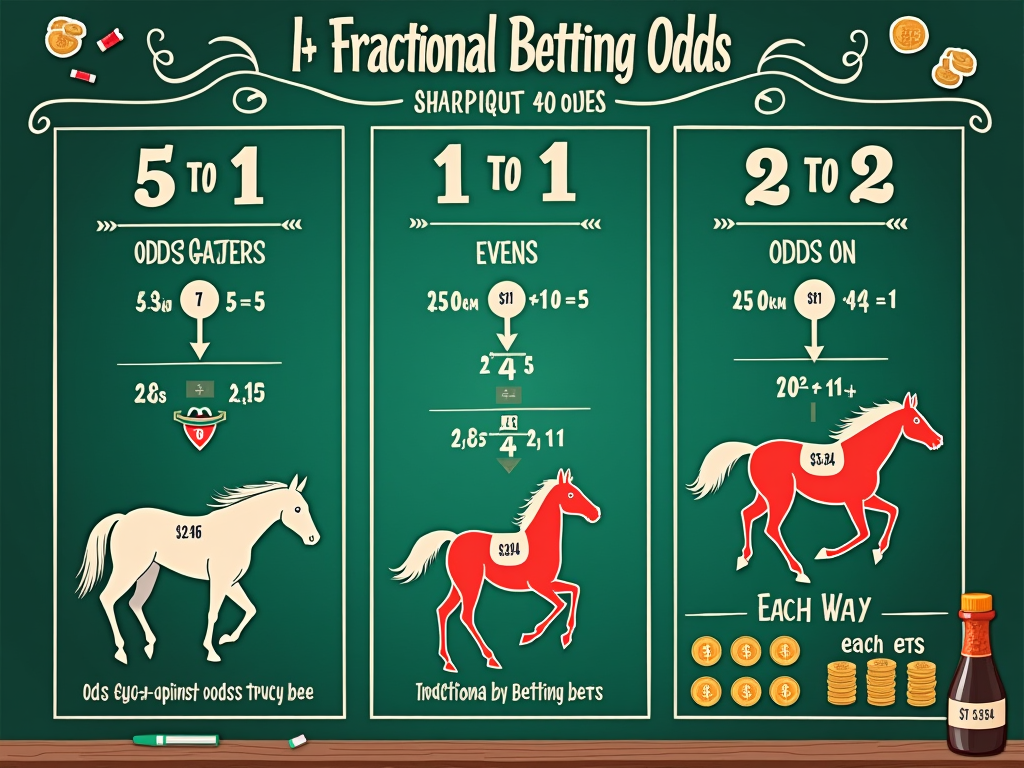
Making Sense of American Moneyline Odds
Understanding the Plus and Minus Signs
American moneyline odds use a simple system based on $100 stakes. When I look at odds with a plus sign (+), I’m seeing potential profit on a $100 bet for underdogs. The minus sign (-) tells me how much I need to stake to win $100 when betting on favorites.
Let’s break this down with clear examples. If I see odds of +150, a $100 bet would return $150 in pure profit (plus my original stake). On the flip side, odds of -200 mean I’d need to risk $200 to win $100 in profit.
Quick Tips for Calculating Payouts
Here’s what I focus on to calculate potential returns quickly:
- For positive odds (+150): Divide the number by 100 to find the profit multiplier (1.5x your stake)
- For negative odds (-200): Divide 100 by the number to find the profit multiplier (0.5x your stake)
- Remember that these calculations show only the profit – you’ll get your original stake back too
American odds are the standard format across US sports betting platforms and sportsbooks. Once you get familiar with the plus/minus system, you’ll find it’s straightforward to spot value bets and calculate potential returns.
I find that American odds make it particularly clear which team is the favorite and which is the underdog at a quick glance. The bigger the number after the minus sign, the stronger the favorite. Similarly, the larger the number after the plus sign, the bigger the underdog.
Think of it this way: The minus sign means you need to risk more to win less (favorites), while the plus sign means you risk less to win more (underdogs). This built-in risk/reward relationship helps make informed betting decisions based on your strategy and risk tolerance.
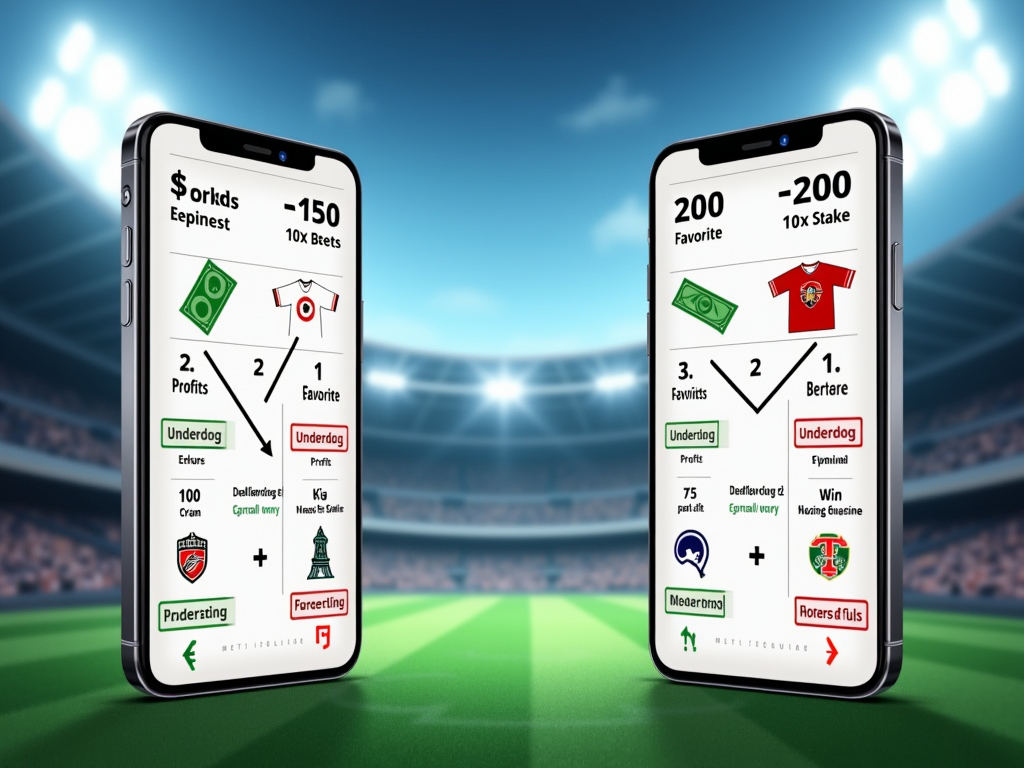
Converting Odds and Finding True Probability
Converting betting odds between formats might seem tricky at first, but I’ve found that breaking it down into simple steps makes it much easier to understand and apply. Let’s explore how to switch between different odds formats and calculate the actual probabilities they represent.
Converting Between Odds Formats
Transforming decimal odds to fractional odds is straightforward – just subtract 1 from the decimal number and turn it into a fraction. For instance, if I see decimal odds of 2.50, I subtract 1 to get 1.50, which converts to the fractional odds of 3/2.
For American odds conversion to decimal, there’s a simple formula. When dealing with positive American odds, I divide them by 100 and add 1. So, if I have American odds of +150, the calculation would be (150/100) + 1 = 2.50 in decimal format.
Understanding Implied Probability
Calculating implied probability helps me make smarter betting decisions through understanding true betting value. Here’s what you need to know about probability calculations:
- For decimal odds: divide 1 by the decimal odds and multiply by 100
- Example: With decimal odds of 2.50, the calculation is (1/2.50) × 100 = 40%
- This means the bookmaker believes there’s a 40% chance of this outcome happening
A key point to remember is that the total probabilities for all possible outcomes in a market will add up to more than 100%. This happens because bookmakers include their profit margin, often called the ‘vig’ or ‘juice’.
Take these practical steps to spot potential value bets:
- Calculate the implied probability for each selection
- Compare your assessment of the true probability
- Look for situations where your probability estimate is higher than the implied odds
- Factor in the bookmaker’s margin when making final decisions
- Track your probability estimates against actual results to improve accuracy
By converting odds formats and calculating probabilities, I can better spot betting opportunities where the true likelihood of an outcome might be higher than what the odds suggest. This systematic approach helps create a more strategic betting plan rather than relying on gut feelings alone.
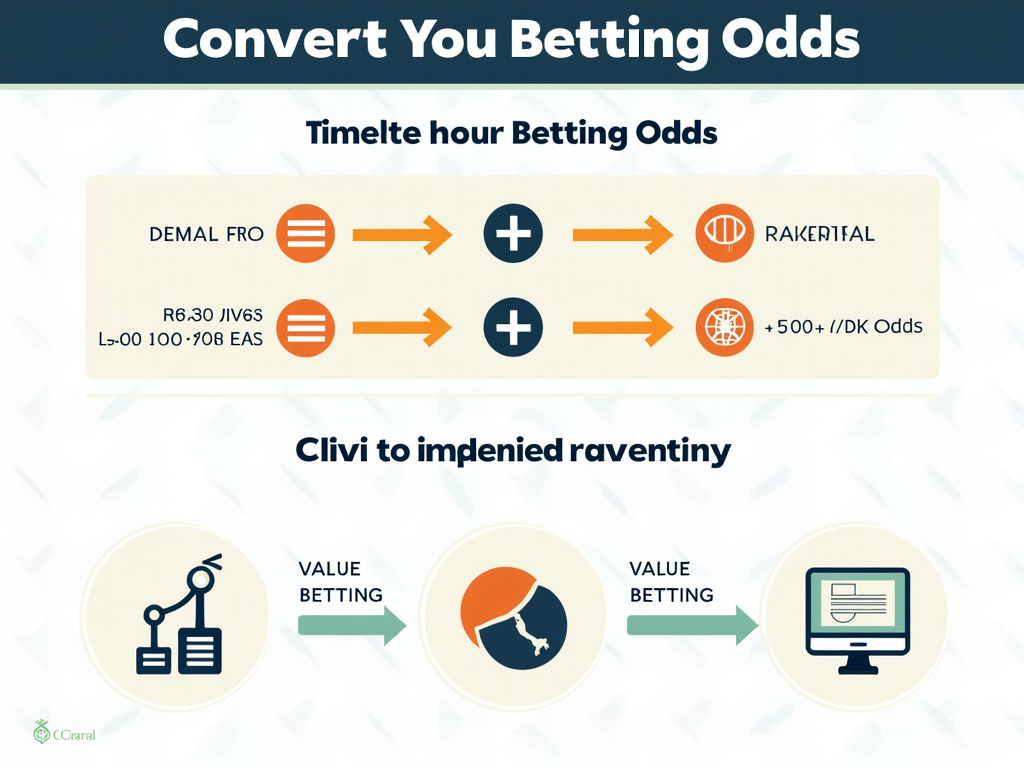
Market Forces and Odds Movement
Odds don’t stay fixed – they’re dynamic numbers that shift based on several key factors that I monitor closely when making smart betting decisions.
Key Influences on Odds Fluctuation
Performance stats form the foundation of odds movement. When a team or player shows exceptional form, the odds typically shorten as more bettors back them to win. For instance, if a striker scores in 5 consecutive matches, you’ll notice their goalscorer odds decrease steadily.
Injury updates and team selection news can trigger rapid odds changes. Here are the critical factors I watch for:
- Last-minute injuries to key players
- Unexpected lineup changes before kickoff
- Return of star players from injury
- Squad rotation in busy fixture periods
- Suspension announcements
The home/away factor carries significant weight in odds calculation. Teams often perform differently on home turf versus away games. I’ve noticed odds typically favor home teams, reflecting historical data showing home advantage impacts results across most sports.
Weather conditions can dramatically affect odds, particularly in outdoor sports. Consider these weather-related impacts:
- Heavy rain affecting ball movement in soccer
- Strong winds influencing passing games
- Extreme heat impacting player stamina
- Snow or ice affecting playing surface
- Poor visibility conditions
Betting volume plays a crucial role in odds movement. When substantial money flows onto one outcome, bookmakers adjust odds to protect their positions. This explains why popular teams often have shorter odds than their actual winning probability suggests – bookmakers account for the higher betting volume these teams attract.
Bookmakers constantly balance their liability across different outcomes. If too much money lands on one selection, they’ll shorten those odds while lengthening others to encourage more balanced betting. This process helps them maintain profit margins regardless of the result.
I pay special attention to early odds movement, as this often signals insider information or sharp bettor activity. Quick odds changes right after markets open can indicate professional punters have spotted value, while gradual shifts typically reflect natural market evolution.
The timing of odds movement matters too. Changes close to event start time usually carry more significance than earlier fluctuations, as late money often comes from well-informed sources.
Understanding these market forces helps identify value betting opportunities. When odds move against the general trend, it’s worth investigating the cause – there might be overlooked information creating a valuable betting opportunity.
Odds movement patterns vary by sport. Soccer odds typically stabilize closer to kickoff, while horse racing markets can see dramatic late changes as final betting surges arrive. I’ve learned to adapt my timing strategy based on these sport-specific patterns.
Market forces don’t operate in isolation – they interact and compound each other. A minor injury combined with poor weather and heavy betting volume can create significant odds movement. Recognizing these interconnected influences improves betting timing and value identification.
Sources:
ESPN Chalk: Betting 101 – Understanding the Odds
Investopedia: How Do Betting Odds Work?
Action Network: How To Read Sports Betting Odds: American, Fractional & Decimal

